We had planned our Vietnam-Cambodia trip for a year and got a great tour package deal from Transpipol Travel and Tours. For the second time, this travel agency did not fail to arrange a packed itinerary that touched all the right bases. Our two-day visit in Vietnam provided the rich opportunity for us to expand our historical and cultural knowledge of the country.
with our English-speaking Vietnamese tour guide, Ben
We faced up to the past, tried local Vietnamese food, haggled for bargains in the markets, and traveled further afield. In this post, let me share with you the top 10 tourist attractions we visited in Ho Chi Minh, a city that’s always full of action. 🙂

Travel Guide: Top 10 Tourist Attractions We Visited in Ho Chi Minh, Vietnam
1. Cu Chi Tunnels
Admittedly, I was clueless about the US-Vietnam war prior to our trip. Maybe I was one of those students in History class who didn’t pay close attention to the topic. Hihihi. 😛 Anyway, visiting the Cu Chi tunnels was an eye-opener for me as the actual site gave a clear picture on the strength and hardships of the Vietnamese people against their foreign enemies in the last century.
how Vietnamese soldiers hid underground (in camouflage)
The 200-km long Cu Chi Tunnels feature meeting rooms, living quarters, kitchens, clinics, and hiding grounds which were used by Viet Cong-era soldiers and their families. Glorifying the guerilla warfare, the connecting tunnels were built only with simple tools like shovel, mattock, etc. in over two decades. Nasty and lethal boot traps were also assembled and strategically placed everywhere in camouflaged “spider hole” dugouts.
nail spike traps as primitive weapons
Now a point of interest and landmark for tourists, the Cu Chi Tunnels are presented basically as a huge war museum offering visitors a sneak peak at the dark past of Vietnam. This is a living tribute to the human will and Vietnamese peasants’ wartime ingenuity.
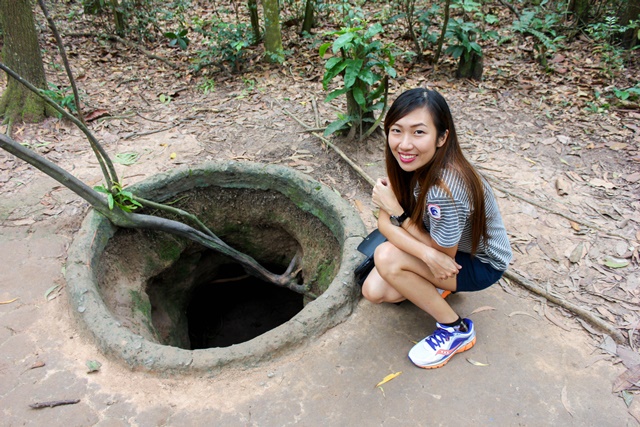
The tunnels were dug so deep so that American tanks would pass overhead without causing any damage. Several levels were designed to have effective air filtration systems (e.g. ventilation holes disguised as termite mounds) to help people breathe underground. Oil lamps were used as light.

We were game to do the tunnel crawl but could not get beyond 40 meters when sweat kept pouring down our faces. My 6′-tall boyfriend struggled with the “duck walk.” His knees almost got bruised while I managed to crawl out without stress. It’s one of those times when I’m grateful for being petite. Haha! It was a wonderful experience nevertheless. We almost felt the real vibe of being in war, hearing simultaneous gun shots in the background. Apparently, there’s a shooting range available for tourists to try out a number of guns.

2. Vietnam Handicapped Handicrafts
One of our quick stopovers included a site called Vietnam Handicapped Handicrafts. It’s a shop featuring the creativity and the fine art of lacquer painting. What’s surprising was that those assembling the pieces were mostly victims of the war who did not have the capacity to work anymore in corporate offices but were given the chance to still earn a living the decent way.


We learned that lacquer painting is practiced as an ancient Vietnamese art whereby a resinous substance from trees is utilized as varnish or glossy coating on the painting. The artists make the paintings for days and even months, depending on the materials used (usually egg shells and mother of pearls) and the size of the canvas. Finished products such as personal and home accessories are brought and displayed in the selling area. Unfortunately, taking of pictures inside is not allowed.
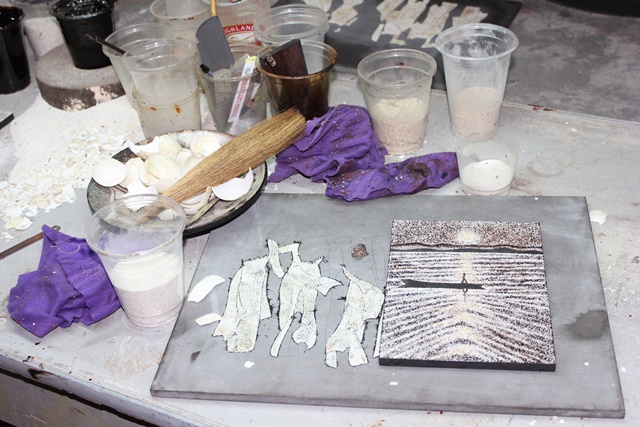

Address: Xo Viet Nghe Tinh, Phuong 17, Q. Binh Thanh, Tp.HCMC, Vietnam
3. Reunification Palace
After lunch at Ngon 138 (food review on a separate post), we had a walking city tour which started from the Reunification Palace (also called the Independence Palace). Preserved almost exactly as it was in 1966, this government building is well developed with grandiose interior design and fixtures with text explanations in every room. It’s the former home of the president of South Vietnam during the Vietnam War. We spent about half an hour viewing the rooms and lounges that are fit for royalty.
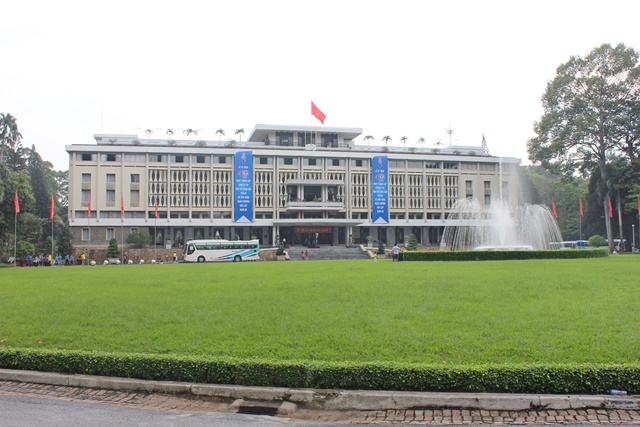
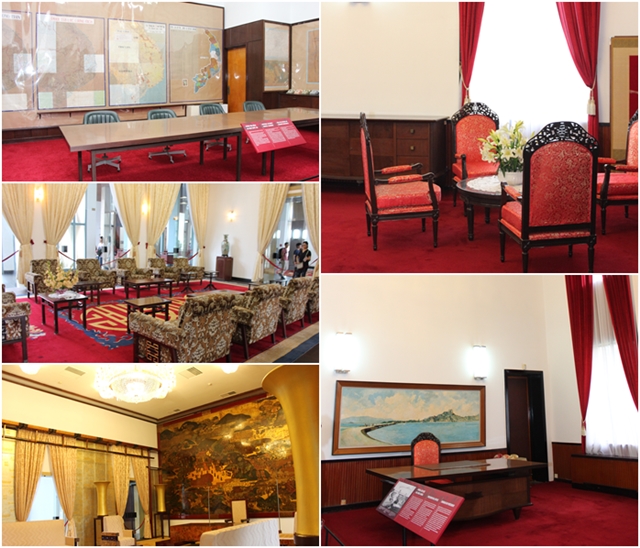
Address: 135 Nam Ky Khoi Nghia | District 1, Ho Chi Minh City, Vietnam
Open hours: 7:30 am – 11 am and 1 pm – 4 pm daily
Entrance fee: 30,000 VND per person
4. War Remnants Museum
Just walking distance away from the Reunification Palace, the War Remnants Museum welcomes visitors to rediscover the atrocities of the war with research materials, photos, artifacts on the evidences and consequences that the invasion force had caused Vietnam.
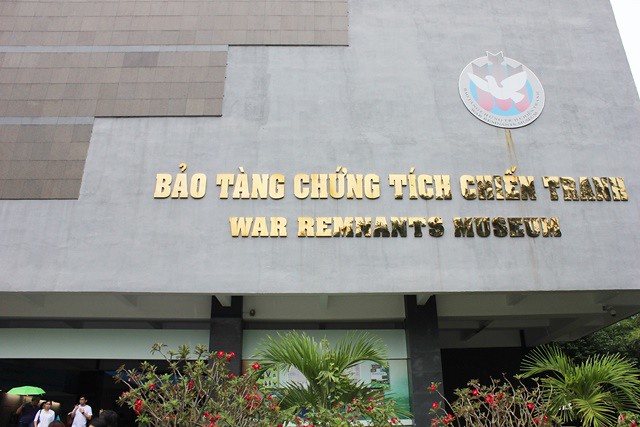
Many people feel emotional and disturbed upon seeing the cruelty of foreign soldiers and horrific torture techniques that show the severity of the war. I was one of them, and there were times when I felt almost about to cry. The reality was harrowing indeed. The War Remnants Museum exhibits are very insightful and I recommend them to everyone who does not mind a bit of gore and saddening experience.
Address: 28 Vo Van Tan St, District 3, Ho Chi Minh City, Vietnam
Open hours: 7:30 am–12:00 pm and 1:30 pm – 5:00 pm daily
Entrance fee: 60,000 VND per person
5. Saigon Notre Dame Cathedral
This cathedral is one of the most beautiful landmarks in Vietnam. We didn’t step inside but were pretty satisfied seeing the French exterior design from the opposite street. It was interesting to learn that this Catholic structure was built piece by piece from France as it was meant to be an exact replica of Notre Dame in Paris. The Saigon Notre Dame Cathedral serves as a good reminder of religious servitude in a communist country.
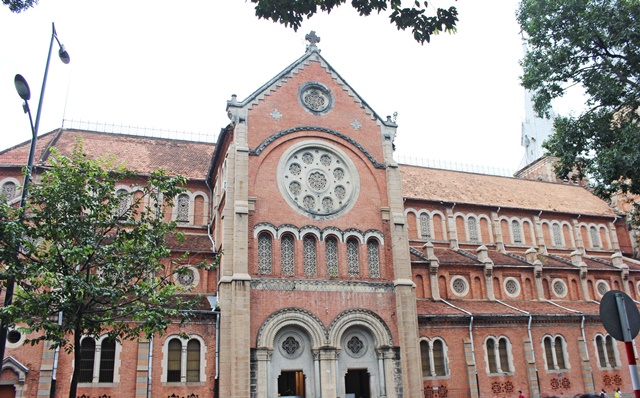
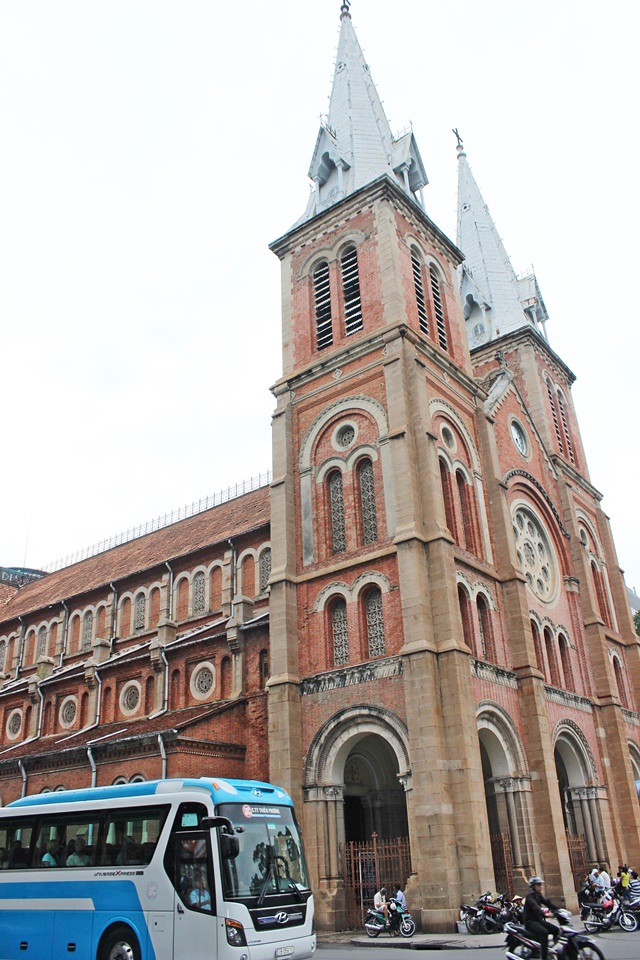
Address: Ben Nghe Ward, District 1, Ho Chi Minh City, Vietnam
6. Central Post Office
A few steps from the cathedral, the Central Post Office also counts with Gothic, Renaissance, and French influences. A three-minute stay outside to take photographs was enough for us. This is the place to go if you want to send letters and parcels, change or withdraw money from international ATMs, buy souvenirs like stamps and books, and view a range of collector coins and stamp sets. Also, if yellow buildings float your boat, the Central Post Office is a must-see! 😛

7. Opera House (Nha Hat Lon)
We spent some time in Vincom Shopping Mall and by the time we came out, it was already as dark as night but time was only around 5:40PM. We wandered around the area, found fancy shops and cafes and the Hanoi Opera House, which was built with magnificent neoclassical French-style architectural design. The Opera House is a hosting place where important meetings and conferences are being held for both national and international performing art groups. Lots of people were going in wearing formal attire to catch the scheduled shows in the theater. One could not get inside unless attending an opera or show.

Address: 1 Trang Tien St, Hanoi, Vietnam
8. Cho Ben Thanh Market
We had dinner at Saigon Steak 123 and proceeded right away to the night market about 20 minutes away from our hotel. Cho Ben Thanh Market was filled of cheap finds and most of them were copy materials or fake designer goods. From clothing, bags, paintings/art works, and souvenirs to food, you can’t go wrong with this place if you love to shop, but be prepared to meet pushy vendors. When something catches your attention, don’t forget to bargain hard. Start as low as 50% of the price offered and haggle until the vendor agrees on the lowest possible price. 😉

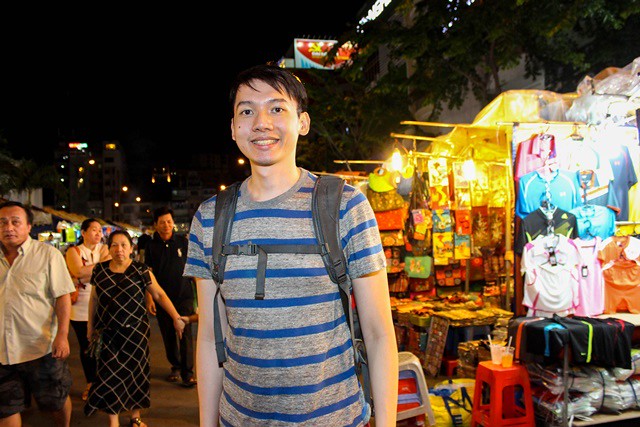
Address: Intersection of Le Loi, Ham Nghi, Tran Hung Dao Avenues and Le Lai Street, Ho Chi Minh City, Vietnam
9. The Laughing Buddha Temple (Vĩnh Tràng Pagoda)
On the second day of our Vietnam tour, we reached Vĩnh Tràng Pagoda near the fruit and vegetables market early in the morning. Now a major provincial destination for tourists and pilgrims, Vinh Trang Pagoda was built in 1849, but it did not look quite so old since it had been restored several times. The main highlight here must be the huge laughing Buddha. It was my first time to see a large seated Buddha with a happy face. 🙂 Gardens packed with flowers and shrubs, lotus pools, and tombs of the monks at the sides also looked well-arranged.
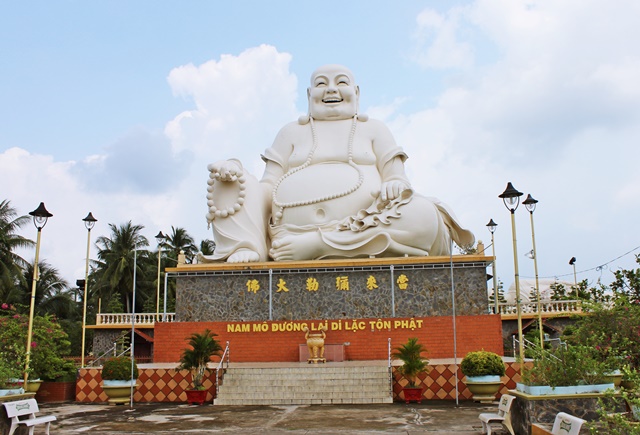
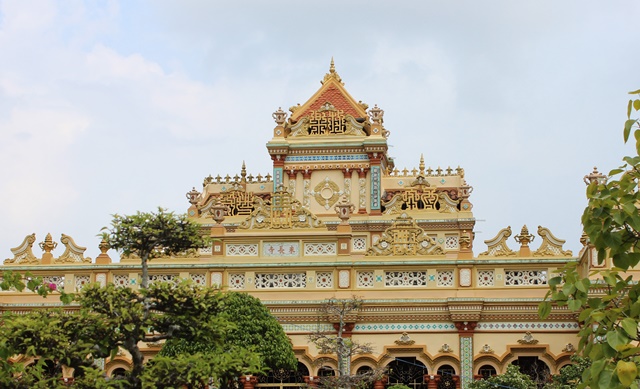
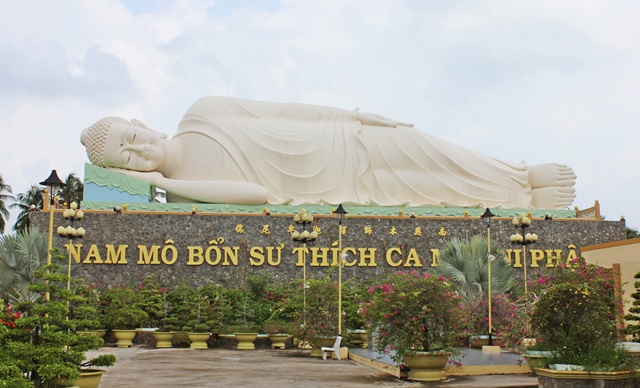
Address: 123 Nguyen Dinh Chieu Street, Ward 6, District 3
10. Mỹ Tho (Mekong Delta)
Ben led us to travel along the Mekong River, the world’s 12th longest river through Asia, for sight-seeing. We rode a motor boat and saw locals fishing with nets and small shacks with big fishing boats. This trip to Mỹ Tho enlightened us as well on how the villagers in Vietnam lived their daily lives in the Mekong Delta. Ben said that most of these rural people were left as orphans of parents who died during the war.
The Tortoise Island (Unicorn Island) was where we tasted different kinds of seasonal fruits, listened to a live Southern traditional music, and learned how coconut candies were was made from fresh coconuts in a local coconut candy farm. Next, we went to Thoi Son Island which is a bee farm where honey is abundant. We got to taste fresh honey from the bees, honey tea, royal jelly, sweet snacks, and some nuts.
On the other side of Thoi Son, long-tail boats on Tan Thach natural canal in Bến Tre transported us through the shadows of water coconut trees. An elderly man and his wife steered the boat with paddles gliding almost silently through the chocolate-brown water. In Bung Tat Village, we spent a wonderful lunch with fellow travelers in Vietnam who came from Singapore, Yvonne and her son, Justin. We enjoyed the assortment of Vietnamese food served. 🙂
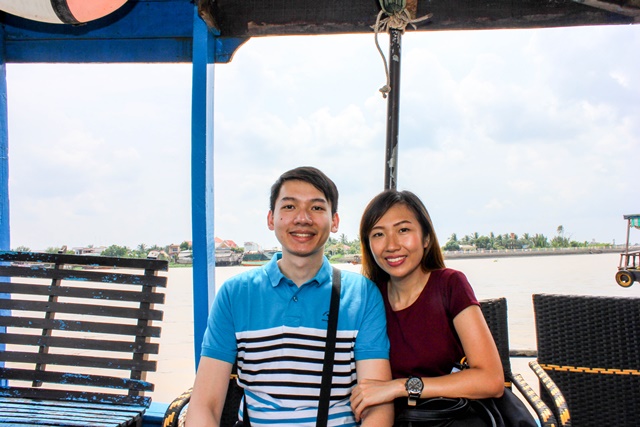
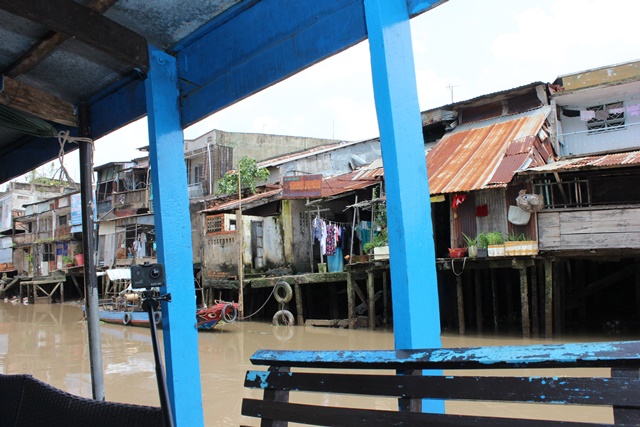

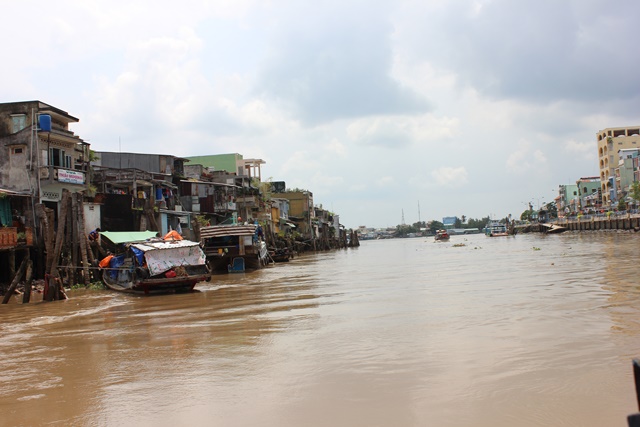

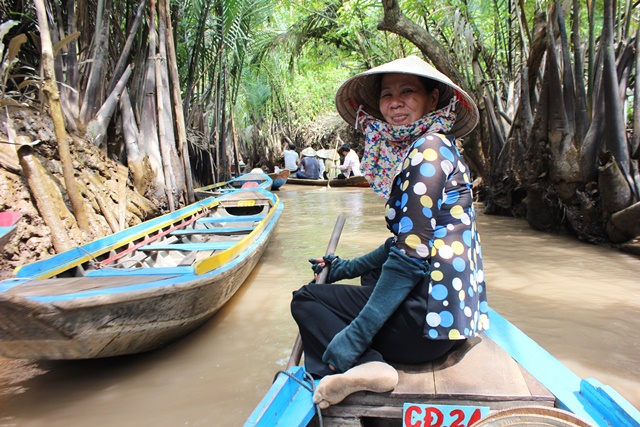
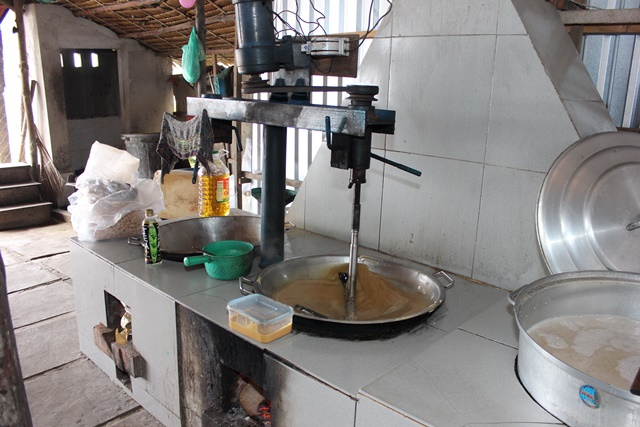
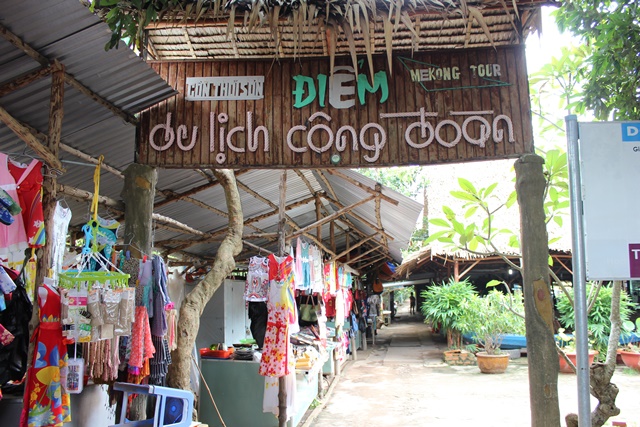

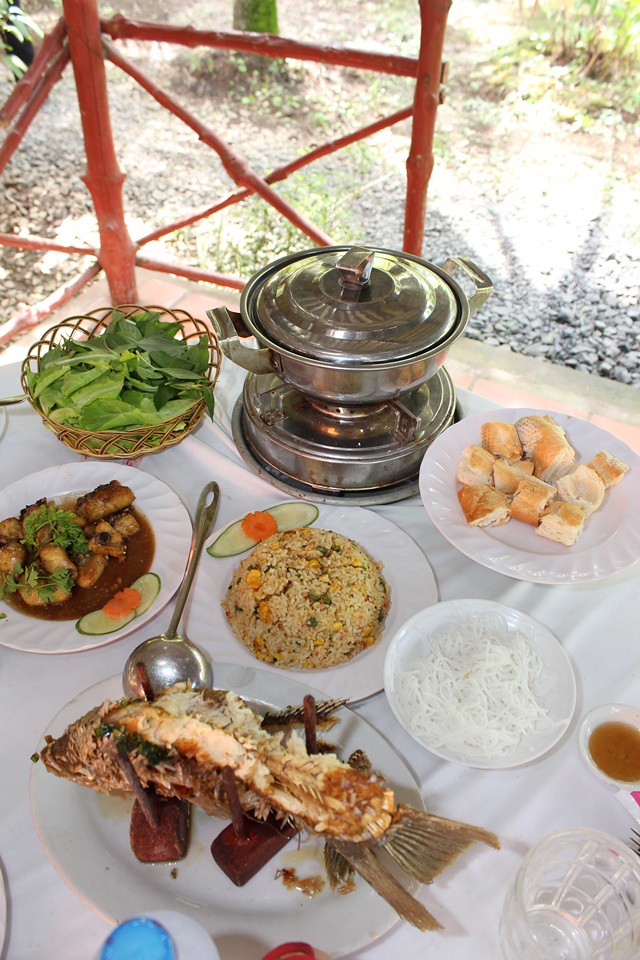
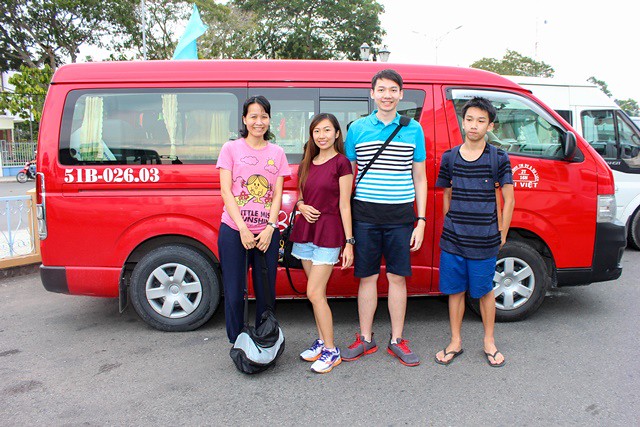
Wrap Up
Before traveling to Vietnam, I was worried about not liking the places we would be visiting because I didn’t know anything about them unlike the more familiar Asian countries to me like China, Taiwan, Singapore, and Malaysia. It was a country that shrouded an air of mystery and danger. In addition, only a small population of Vietnamese know how to speak in English. Language barrier, I assumed, would be a problem.
However, all my worries were gone as soon as we started exploring the city. Visiting Ho Chi Minh, Vietnam was like a time travel back to the old world. It surely made us more aware about its tumultuous history, colonial charm, and inspiring scenery. 🙂
We departed to Phnom Penh via a bus at 6AM on the third day. Watch out for my next blog entries for hotel reviews, restaurant reviews, and more travel experiences in Vietnam and Cambodia. 🙂

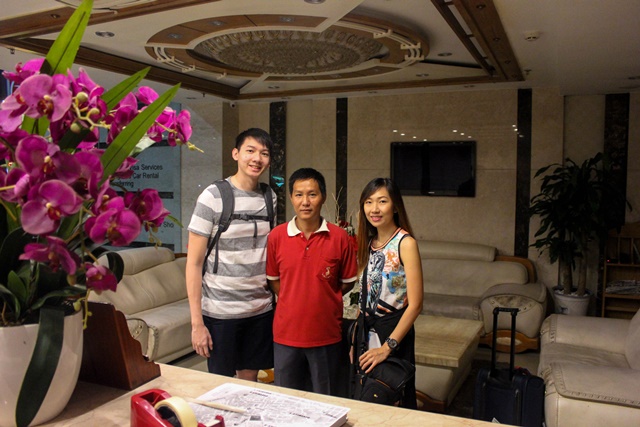

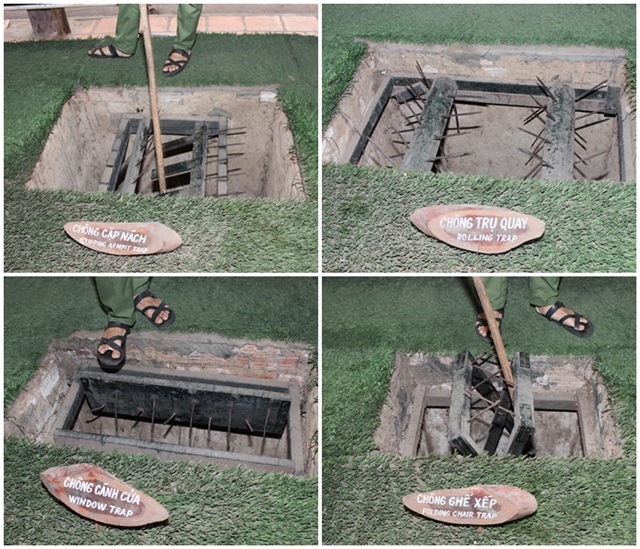
Leave a Reply to Terry C Cancel reply